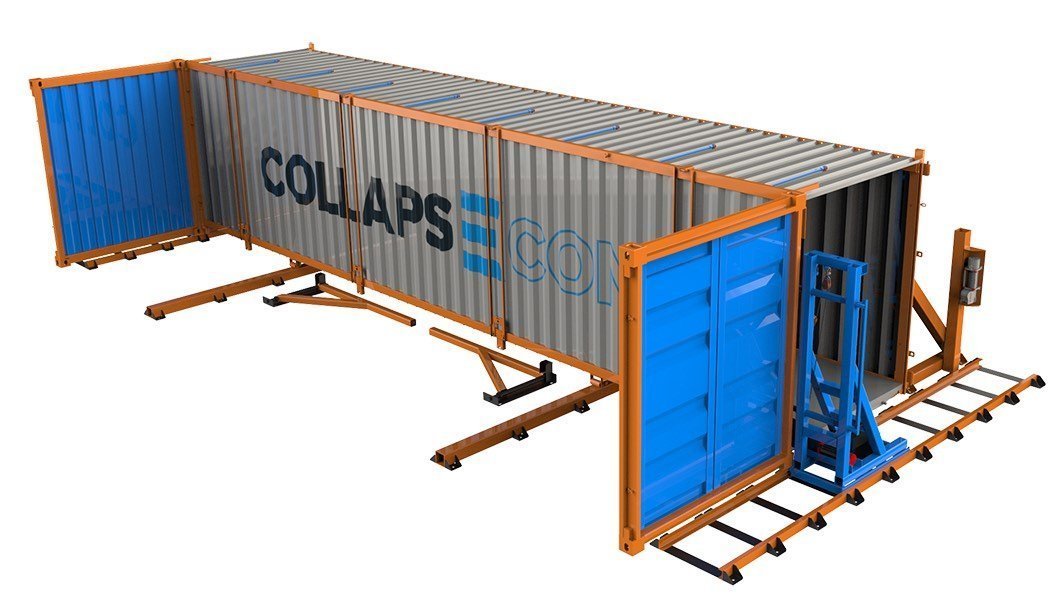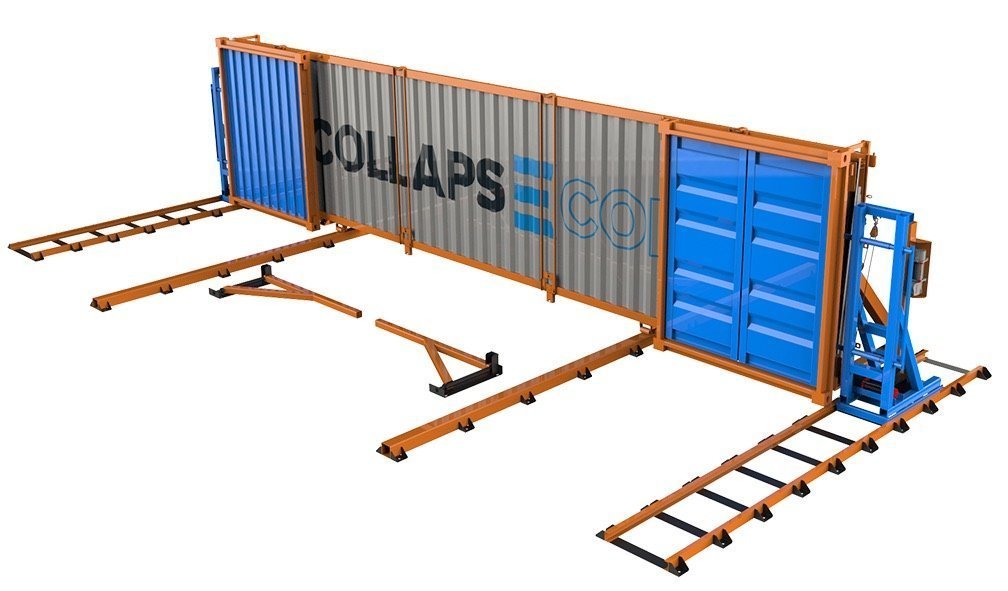CEC Systems: Solving the empty container riddle?

Sydney-based CEC Systems is making efforts to develop new technologies to bring the humble shipping container into the 21st century and solve one of box shipping’s greatest frustrations – how to handle an empty container more efficiently.
CEC Systems was founded by Nicholas Press, a strategic logistics officer in the Australian Regular Army. During his deployment to Afghanistan in 2008, Press observed an accumulation of empty intermodal containers at operating bases, often where space was a limited and valuable commodity.
The empty container problem inspired Nicholas to investigate inefficiencies in shipping and logistics beyond military operations.
From there, Press came up with the idea of designing a collapsible shipping container. Following his army career, he established a logistics consultancy that specialised in supporting defense capability acquisition and integration and founded CEC Systems in 2015.
Following six years of concept research and prototyping, CEC Systems has introduced its core product, the collapsible economic container – the Collapsecon C-400 (pictured below) to the market.
The C-400 is a horizontally collapsible 40-foot intermodal shipping container, which is able to be seamlessly integrated into the current global shipping and logistics chain, which will deliver significant efficiency improvements.
According to Press, Collapsecon can be collapsed to 25% of its original size, enabling up to four collapsed containers to be combined into the geometry of a single standard container for empty transit/storage.
“Whilst empty containers will always exist as a result of global trade imbalances, the ability to reduce the loss to approximately $7.5bn represents a potential net annual saving of up to $22.5bn worldwide each year. When factoring in the addition ROI, operational efficiencies, environmental benefits and reduced demand on infrastructure across the entire supply chain, the potential for collapsible containers is immeasurable,” Press maintains.
With over 38m containers in the world today, the United Nations estimates that the shipping industry on the whole spends on average $30.1bn per year on the storage, handling and re-positioning of empty containers or 19% of global industry income annually. Additionally, empty containers account for approximately 20% of container assets and 24% of global port handling.
“Collapsible containers are of significant interest to the shipping industry as there is a significant mismatch in global trade, meaning that a large number of empty containers are being stored and shipped. Each movement requires multiple non-productive handling events, which incur significant costs. As the global container fleet is estimated to double to approximately 76m units by 2060, the issue of empty containers will likely grow in parallel,” says Press.
The Collapsecon C-400 marks the first in a series of products to be rolled out by CEC Systems. Currently the company is working to fully optimise the C-400 system to apply capacity and weight enhancements, whilst also achieving manufacturing efficiencies, with a target to introduce the Collapsecon C-401 in late 2018.
Additionally, CEC Systems is also working on alternate sizes of the Collapsecon system such as a 20-foot variant as well as IOT based solutions that can be integrated into the containers to improve operational efficiencies.
“These developments, along with other areas of R&D will enable the company to expand beyond just the shipping industry but deliver real improvements across the wider supply chain,” Press concludes.


